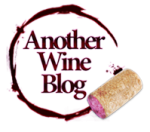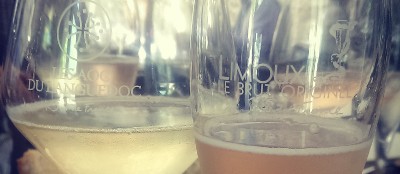This post was originally published on January 30, 2016. Tim and Phyllis have since sold French Country Wines and sadly, the new owners do not carry this lovely wine.
Wine lovers in Houston and nationally are discovering sparkling wines that originated nearly 100 years before Dom Pérignon was born, and years before Champagne became the wine of celebrations. To taste true tradition first created by Benedictine Monks in the Abbey of Saint-Hilaire, look to the wine region in southern France near Carcassonne and the eastern foothills of the Pyrénées -- Limoux.
One of my favorite regions to visit during the annual Terroirs et Millésimes en Languedoc, Limoux is west of the Corbières hills in a rocky soil of clay, sandstone and limestone. Although it sits at a southerly latitude, the climate of Limoux is moister and cooler than most of the other regions in southern France. Strong wind influence from both the drier Atlantic and the warmer Mediterranean create ideal conditions for the slow, even ripening of the white wine grapes that go into their delicious wines -- Mauzac (the most prevalent and locally known as Blanquette) Chardonnay and Chenin blanc.
Blanquette de Limoux originated in the Middle Ages, when one of the aforementioned monks discovered that wine he had bottled and carefully stoppered with a cork appeared to be going through a second fermentation -- it was forming bubbles! Some say that was in 1531. According to historians the oldest manuscript of certified origin mentioning "bottles of Blanquette" from Saint-Hilaire was an accounts ledger dated 1544.
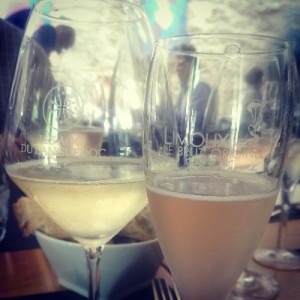
While the production area for Cru Limoux was first delineated as early as 1929, Languedoc's first controlled appellation; Blanquette de Limoux and Blanquette Méthode Ancestrale was noted by decree on February 18, 1938, making it one of France's first appellations. Wine growers have continued the tradition of the original sparkling wine and added production of still wine as well. Since October 2009, Limoux appellations are now grouped together under two sets of specifications: Crémant de Limoux which includes white and rosé wines; and Limoux which includes white, red, Blanquette de Limoux and Méthode Ancestrale.
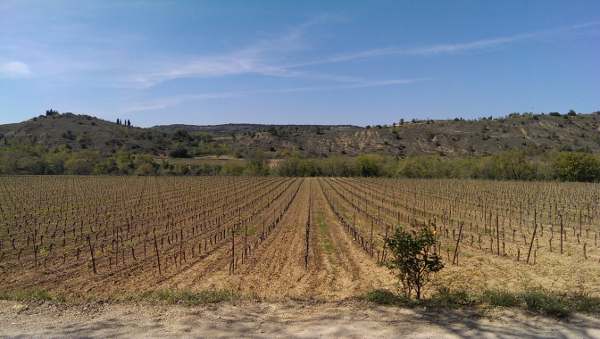
In the United States, often grape growers can plant whatever they want, wherever they want as long as Mother Nature gives her blessing. But in France extensive rules and customs have been established geared toward producing quality wines. Unlike in America where a wine is known by the grape from which it is produced, French wines are known by their appellation d'origine contrôlée (AOC); the certification granted to certain French geographical indications for wines, cheeses, butters, and other agricultural products by the governmental bureau known as the Institut national de l'origine et de la qualité (INAO). In Limoux there are five AOCs; three directed toward producing sparkling wines and two for still wines.
AOCs within Limoux
The traditional grape of Limoux, as we have mentioned, is Mauzac, also known as "Blanquette" meaning small white, due to the fine white down on the underside of its leaves. Rules for the AOCS within Limoux are as follows:
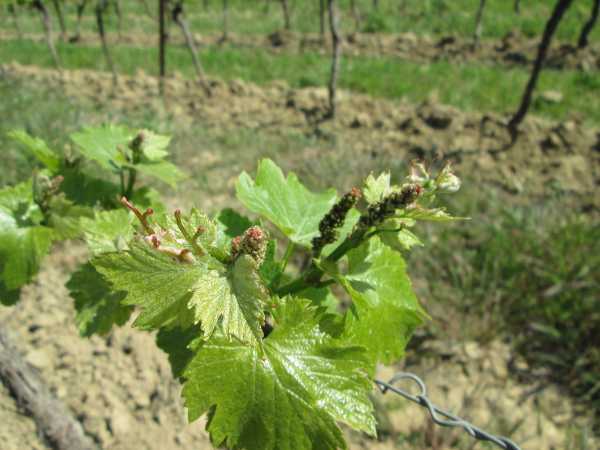
AOC Limoux Blanquette de Limoux Méthode Traditionnelle - Here Mauzac must comprise at least 90% of the blend, with percentages of Chardonnay and Chenin may not exceed 10%. Grapes are hand-harvested. Secondary fermentation is "on the lees" and yield is limited to 60 hectolitres per hectare.
AOC Limoux Méthode Ancestrale - refers to a sparkling wine that is 100% Mauzac. Also harvested by hand, yield is limited to 60 hectolitres per hectare.
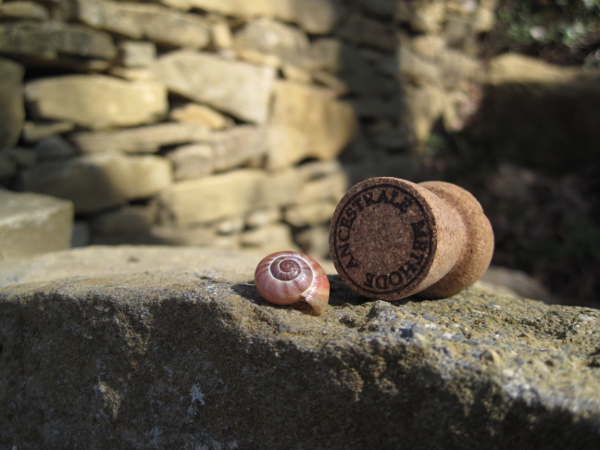
AOC Crémant de Limoux - wines are blended primarily from Chardonnay and Chenin, which make up 90% of the varietal range. Chenin must account for at least 10% and no more than 40%. Secondary grape varieties or Mauzac and Pinot noir are restricted to a combined 20% and Pinot Noir may not exceed 15%. The wines may only be bottled after the December 1st following the harvest and must be aged on the lees for 9 months. They can only be released for sale after at least 12 months aging. Yield is limited to 70 hectolitres per hectare, and grapes must be harvested by hand.
AOC Limoux Blanc - are still white wines which can be made from Chardonnay, Mauzac or Chenin either as a single varietal or blended. Maximum yields are limited to 50 hl/ha with whole grape pressing and separate fermentation for each variety must be aged in oak barrels. Extraction is defined as well: only one hectalitre from 150 kg of grapes.
AOC Limoux Rouge - are still red wines made from predominantly Merlot which must range from 45 to 70% of the cuvee with a minimum of 20% Côt (another name for Malbec) and /or Syrah and/or Grenache and up to 35% Cabernet Franc and/or Cabernet Sauvignon through their use is not required. The wine must be blended from at least three grape varieties and yields are restricted to 50 hl/ha. Vineyard site identification is required before May 31 of each year.
Four Distinct Terroirs of Limoux
The vineyards of Limoux cover over 7,800 hectares, divided between 41 localities and grouped into four distinct terroirs delineated by their climates:
Terroir d'Autan - Terroir d'Autan is the heart of the appellation and occurs over the hillsides surrounding Limoux. The area, which ranges from between 150 and 200* metres above sea level, with an average rainfall of 570 mm annually, is sheltered from West-East winds by two mountain ranges -- the Corbieres and the Chalabrais.
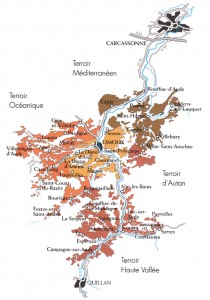
Terroir Méditerranéen - Terroir Mediterraneen grapes are harvested earliest of the four terroirs. This area, which is the closest to Montpellier sits east of Limoux is between 100 and 200 meters above sea level with an average rainfall of 650 mm annually. It enjoys a very warm climate tempered by sea breezes that can create high humidity, which promotes a rapid increase in sugar levels, thus the early harvest.
Terroir Océanique - West of Limoux in an area closest to Toulouse, Terroir Oceanique enjoys the most rainfall of the four regions at an average of 780 mm per year. With lands between 200 and 300 metres above sea level, it is characterised by a humid, yet temperate climate, exposed to westerly airflows. Grapes ripen here about two weeks later than in Terroirs d'Autan and Méditerranéen.
Terroir Haute Vallée - Terroir Haute Vallee (High Valley) at 300 meters is the highest above sea level of the four Limoux terroirs. Set in the upper Aude, towards the Pyrenees, this damper, colder area is harvested last due to its late Spring and cool Autumn. Chardonnay and Merlot thrive in this area.
A Rose is a Rose is a Rose
The growers association of Limoux created a Vine Landscapes study to help each distinct terroir be more easily identified through a predominant rose color:
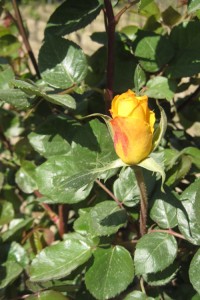
- Yellow roses in Terroir d'Autan
- Red roses in Terroir Méditerranéen
- Pink roses in Terroir Océanique
- Orange roses in Terroir Haute Vallée
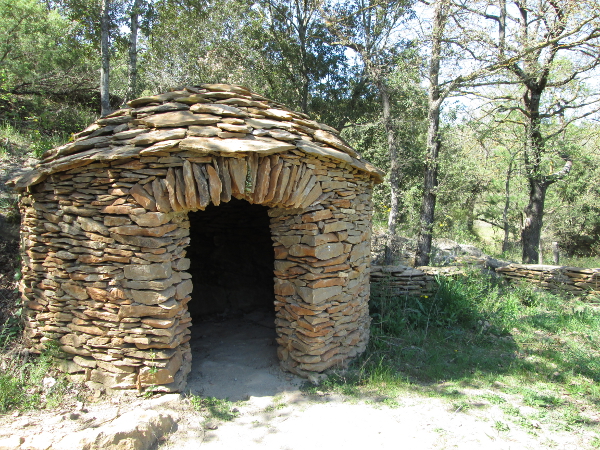
*To calculate the area and distance from metric measurements visit here.
Some of our Favorites from AOC Limoux
Last year the visit was based in Montpellier, a bit farther than our previous stay in Carcassonne, but we were delighted to have lunch with Françoise Antech-Gazea who joined her father and uncle in 1996 to take up the reins of the Antech Limoux. She shared with us her Pure Emotion Crémant de Limoux Rosé 2013 as well as her Heritage Crémant de Limoux Blanc Brut Millésimé 2012 to pair with our fresh green and sardines.
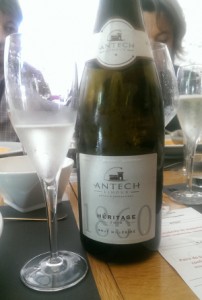
Françoise is also a member of Vinifilles. Established in 2009, Vinifilles is a group of women vintners in Languedoc-Rousillion, who bill themselves as "skilled, schooled, and passionate about their work. Irrepressible, inimitable, indomitable; joyful, generous and dynamic; full of fun and friendship." They are 18 dynamic women from 1 region sharing their passion for their chosen profession whose 100% sustainable vineyards on 586 hectares in 21 AOCs sell over 2.7 million bottles per year!
Lucky for us, some of those bottles are sold right here in Houston! Another of the cheerful Vinifilles is Caryl Panman of Château Rives-Blanques.
"My husband and I came to Limoux from another world," says Caryl, "drawn to this undiscovered gem buried in the lower south-westerly corner of the Languedoc by its beautiful landscape, towering Pyrenees, and above all, by its wonderful wines. This was the beginning of a journey of discovery for us both: in the process I discovered myself, and a limitless passion for the place and its products" she says.
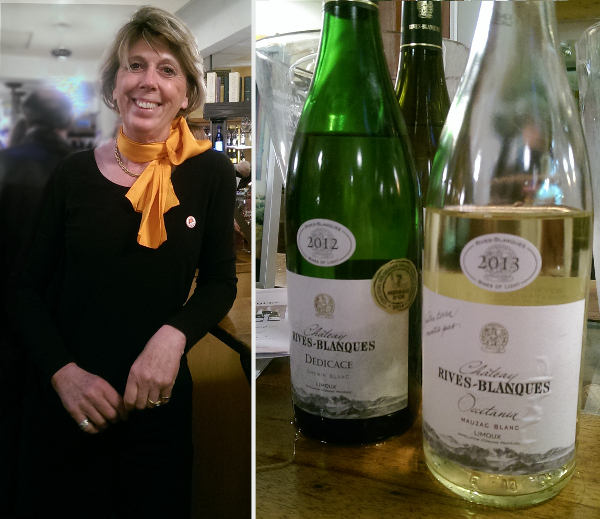
Château Rives-Blanques is ones of the few vineyards in the south of France that specializes in white wines only: five AOC Limoux's (A Chardonnay, a Chenin Blanc, a Mauzac and two blends of the three varieties) and three award-winning methode tradionelle sparkling wines (Blanquette de Limoux, Crémant de Limoux rosé and a Blanc de Blancs) and IGP Pays d'Oc (Chardonnay/Chenin) and a botrytised sweet late harvest wine. I have tasted them all, and they are truly delicious. Lucky for us, several are carried by Phyllis and Tim at French Country Wines in the Rice University Village area on Bartlett! We always have at least one or two of them chilled and ready to open.
One widely available Crémant de Limoux Brut Rose is the Cuvee Thomas Jefferson by Gérard Bertrand, recently named Wine Merchant of the Year by the French Wine Magazine RVF. We just received a bottle but have not yet tasted it, but our friend Wilfred Wong has and gives it excellent marks! He posts on wine.com telling us,
"One of the reasons why people love bubblies so much is for their charm and this one has that and more! At this price, it ranks high in the terms of deliver value for the $$$'s. Perfect for the deck on a comfortable evening on the deck! Light straw color; fresh apples in the aromas, charming and pleasing; medium bodied, fresh and bright on the palate; dryish, medium acidity, good balance; lively core fruit flavors, fine concentration; medium finish, smooth and crisp in the aftertaste."
The 2013 vintage is a blend of 70% Chardonnay, 15% Chenin Blanc and 15% Pinot Noir, and was created as a tribute to Thomas Jefferson. One of our Founding Fathers, Jefferson often traveled to France on missions of "diplomacy" to add to the White House cellars. It is said that he spent a large portion of his Presidential salary on wine, and wine from Limoux was said to be the only sparkling wine to be found in his own personal cellar.
But you don't have to go to Monticello in search of Limoux, it is available in wines shops like French Country Wines, and large retailers like Costco and Specs in Houston, and a variety of locations nationally. And if you're going to be in New York City next weekend, check out La Nuit en Rosé New York Winter Edition: a rosé infused indoor Garden Party to a secret warehouse location in Chelsea on Friday February 5th, 6PM-9PM and Saturday February 6th, 12PM-3PM and 6PM-9PM. Act quickly before it sells out by purchasing your tickets at this website.
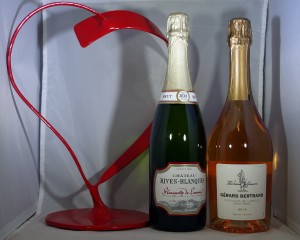
If you're a member or the trade or press and headed to ViniSud 2016 Trade Fair in February, please take time to visit the Gérard Bertrand (Hall B2, Aise B, Booth 49) Antech Limoux (Hall B2 Aisle D Booth 10), Château Rives-Blanques (Hall A2, Aisle C, Booth 25) and the Vinifilles (Hall A4, Aisle A Booth 96) exhibits at Parc des Expositions in Montpellier February 15th-17th.
This Valentine's Day, treat your #winelover to wines from the place where sparkling wines started: Limoux!
Cheers!
*To calculate the area and distance from metric measurements visit here.
The WineWonkette
